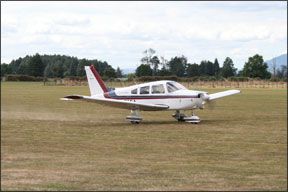The quest to come up with the perfect personal airplane, which would sell in droves, was probably the dominant force in the evolution of general aviation ever since the post-World War II boom and bust. It looked easy: it only needed to perfectly combine ease and cost of operation, ability to carry the right number of passengers and operate from most all airports in the country. Piece of cake.
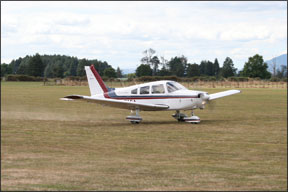
Aeronca, Luscombe, ERCO, Piper and Cessna, among others, all eventually came to the conclusion that the future for mass-marketing airplanes was wrapped up in something that had four seats and on the order of 150 HP. ERCO (the Ercoupe folks) never went past a prototype. Aeronca and Luscombe gave up after limited success, while Cessna and Piper went on to fight it out for decades, and Beech and Grumman-American tried to make inroads.
That niche proved to be the beginning rung of a market ladder where airplanes can be very satisfactory trainers, but also practical transportation tools. They won’t haul a lot of people or cargo, nor will they do it quickly, but they offer economical travel. They often serve as a pilot’s first “real” airplane after primary training. The market demands that they be reliable, inexpensive to operate and relatively easy to fly. They must excel as rental airplanes—thus be designed to be flown by any pilot, and withstand the consequent beating, while providing a reasonable income to the FBO.
Cessna won the war—the Skyhawk owns this market, and used-airplane prices reflect that dominance, but the Piper PA-28-151 or -161 Warrior came a respectable second. It, and the AGAC AA-5 Traveler/Cheetah, are good, solid airplanes that can be had for less. (Beech’s entry, the Sport, is short on performance when compared to the Warrior and Cheetah.)
The AA-5 went the way of the dodo in the late 1970s, and attempts to resurrect it (in the form of the Tiger) failed. Beginning in the mid-1980s, Piper, too, fell on hard times and was forced into bankruptcy, finally emerging several years (and a few abortive buyout attempts) later as the New Piper. In 2006, “new” was dropped from the company’s name.
Unlike the Skyhawk, and with only one or two exceptions, the Warrior was been in production throughout, even if the number of airframes manufactured in the last several model years could be counted on the fingers of one hand. In the “Warrior III” configuration, the model was marketed mainly as a trainer before quietly disappearing from Piper’s lineup this year.
A glance at current prices of mid-1980s Skyhawks and Warriors shows that PA-28-151/161 prices have closed some of the historical gap with the Skyhawk, but are still a relative bargain: The 1984 Cessna averages $10,000 more than an ’84 Warrior, according to the Aircraft Bluebook Price Digest.
History
As general aviation was entering its heyday of the 1970s, Piper’s line was beginning to look dated. The basic PA-28 had come out in 1962, and hadn’t changed all that much. Piper’s PA-28 and -32 singles all had the characteristic, constant-chord “Hershey bar” wing, and the company was about to lower the boom on the sleek Comanche. It was time to update the line.
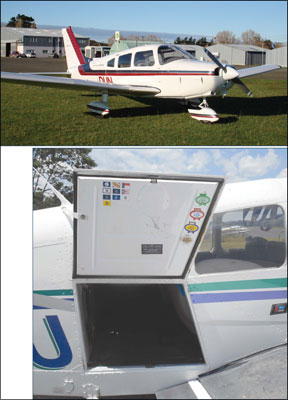

A new airplane was planned, one that would take aim squarely at the Skyhawk. Previously, Piper didn’t really have a strong competitor for the Cessna 172, even though it offered Cherokees with 150 or 160 horses through most of the 1960s. The Cherokee 140 was more cramped, being more of a 2+2 airplane than a true four place, and it didn’t perform as we’ll as the Skyhawk.
The first Warrior was introduced in 1974, powered by a 150-HP Lycoming O-320-E3D engine. It didn’t replace the Cherokee 140, though the 140 did succumb to poor sales after the 1977 model year.
The Warrior boasted one big difference: a new, longer, semi-tapered wing with a higher aspect ratio. This new wing helped the handling, with lighter roll control forces, and also boosted the climb rate. It also helped the airplane’s looks. The new wing design first appeared on the Warrior, but eventually found its way into all of the PA-28 series as we’ll as onto the PA-32.
Interestingly, the new design represented a deviation from the production efficiencies originally touted as a virtue of the constant-chord wing. And it’s fun to recall some Piper engineers, back when it was introduced boasting that the fat, new, stubby wing was actually every bit as good as the sexier-looking tapered Comanche wing, aerodynamically. Piper’s most significant upgrade to the Warrior came in 1977 when a slightly different O-320 engine—the -D3G—was bolted on, offering a 10-HP boost in output. The results were dubbed “Warrior II.”
A couple of other evolutionary changes occurred in 1978, when Warriors received more streamlined wheel fairings, and in 1983, when the battery was removed from under the rear seat and placed in front of the firewall. The new fairings—aftermarket versions of which are available under STC—yielded some seven knots in cruise speed, according to the book (optimistic numbers, users tell us), while the battery change shortened the run to the starter and helped combat starting problems (though these had been largely overcome, according to users, by swapping copper for aluminum cables).
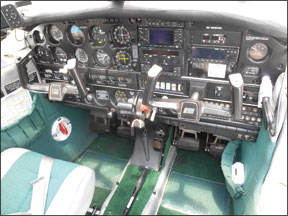

Thanks to the change in weight and balance, shifting the battery location allowed the gross weight and useful load to be hiked by 115 pounds, and extended the aft CG to allow more of a load in the baggage compartment. (The boost is available via STC for older 160-HP Warriors.)
An attempt to create some interest in a moribund new-airplane market was made in 1988, when Piper released a version of the Warrior, targeting flight schools, called the Cadet. A stripped-down Warrior, it was available in VFR and IFR versions. The experiment continued through the 1994 model year. Another spruce-up resulted in the Warrior III in 1995, which remained in production through 2012.
Today, a 2012 Warrior III with standard equipment will set you back $289,900. An average 1974 Warrior model brings about $25,000.
Performance
The 10-HP boost in power raised the published 75-percent cruise speed from 116 knots to 121 knots. And the new speed fairings nudged that up to a claimed 127 knots—not exactly blinding, but squarely in league with the Skyhawk, even if easily eclipsed by the Cheetah. Owners told us in no uncertain terms that real-world performance is we’ll less than the book figures: Owners of the 160-HP model reported cruise speeds from 110 to 120 knots. On the good side, the fuel burn at 100 knots can be as low as 8 GPH.
One big gripe by owners of the 150-HP model is a miserable climb rate. “It’s taken me to 292 airports in 35 states. As a Jack of all Trades (master of none), it does not climb rapidly, carry a lot of weight or go fast,” wrote one owner of a 150-HP model.
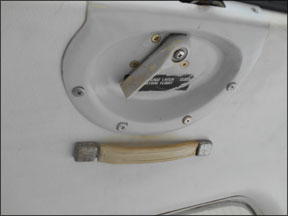

One of the nice features is a generous 50-gallon fuel load (with 48 gallons usable). Burning 7.5 to 10 GPH at cruise, these birds yield a fairly good range with four to six hours of flying. One pilot said he flight planned for 4.45 hours with a 45-minute reserve, and one appreciated the endurance when IFR. Another owner wasn’t happy, saying, “There are times when 50 gallons has been limiting, and I would have liked to have had at least 72 gallons, as did some of the Arrows.”
Runway performance is adequate, with an owner of a 160-HP model reporting his being flown from a grass runway. He says the airplane is “adequate for the 2600-foot strip. I’m careful with four passengers on high density altitude days,” however, especially if the grass hasn’t been mowed.
Comfort/Loading
While past respondents rated comfort only as average, the current consensus is it’s quite good. Later Pipers benefit from having some of the best seats in general aviation, from both a comfort and crashworthiness standpoint. These seats are designed with an S-tube frame similar to the legendary JAARS seat, which progressively deforms during impact, absorbing energy before it reaches the occupant. For greater pilot comfort, there is an optional vertical seat adjustment which some say is great but others say is prone to malfunctioning.
The fuel selector is located out of sight alongside the pilot’s left knee. The need to switch tanks left and right results in more fuel mismanagement accidents than with the “both tanks” system on the high-wing Cessnas, judging from the accident reports. Naturally, it’s also easy to develop an imbalance unless the pilot remembers to switch regularly and there is no aileron trim for the airplane. This makes at least a wing-leveler autopilot a nice option, in our opinion.
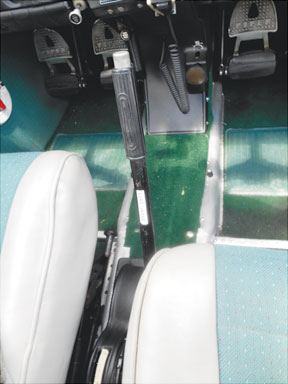

The Warrior’s parking brake is a robust handle sticking out from the bottom of the panel. It’s simple and strong, and it works. The same goes for the flap system. It’s manual, positive, blessedly simple and it just doesn’t break.
Like most low-wing aircraft, however, entry and exit is awkward. The Warrior has only one door, so three of the four occupants have to do some contortions to get in place. Emergency egress is problematical, since the rear windows cannot be opened in an emergency (like those of some Bonanzas, for example). The baggage door is fairly large, however.
Naturally, with a full load of 50 gallons, the Warrior won’t carry four adults, but some owners report fuelling up only to the tabs (34 gallons), accepting the reduced range and legally flying off to their destination. The baggage compartment will take a full 200 pounds structurally, the same as more powerful PA-28s. That’s a lot more than the Skyhawk and Cheetah’s maximum of 120 pounds, by comparison.
Most owners say nice things about cabin ventilation, thanks to an abundance of outlets, both overhead and underneath. Unfortunately, there were complaints that in winter the overhead vents were too much of a good thing and could not be completely shut off, giving passengers the chills. Pilots have solved this problem by simply taping up the exterior air inlet on the tail in the winter. We also received reports of the heater baking the ankles of those in front while rear passengers froze.
A few owners had the air conditioning systems available as options on the Cherokee line. Those who did felt the cool air yield in summer was not worth the sacrifice in already-limited payload and performance.
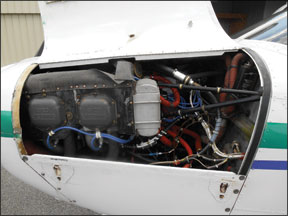

Handling
The Warrior shares with the other Cherokees a gentle nature, pleasant handling and such a reluctance to stall aggressively that some pilots rate it a poor teacher. Several respondents said that with both rudder and stabilator trim, the airplane does not need an autopilot.
We’d rate runway handling as good, despite the number of accidents on both takeoff and landing—especially landing—we uncovered in past checks of FAA accident and incident reports. Further investigation revealed that many were student training accidents.
Pilots report they like the way the aircraft handles in a crosswind landing and feel more secure taxiing in windy conditions with the wide gear stance, as opposed to operating in the high-wing Cessnas.
Competition
The Cessna Skyhawk and the AGAC Traveler/Cheetah are the most logical competitors to the Warrior for the attention of buyers who want four-seaters that won’t break the bank and who are willing to settle for modest performance.
The Cessna has by far the best overall safety record. In a cross-country race, the Cheetah would edge out a 160-HP Warrior with the later wheelpants (the Traveler is slower), and leave the Cessna and the older Warriors in its propwash. And while the Traveler/Cheetah has the most pleasant, facile handling, in our book, it is not as adept at handling short fields. The Cessna gets our nod for getting in and out of little runways.
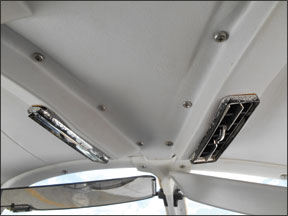

Maintenance
Here’s where the Warrior should shine, since it’s the opposite of high-tech sophistication. It’s got fixed gear, a fixed-pitch prop, mechanical flaps and a small-bore carbureted engine. It also comes with a cowling providing the best engine access in its class: Doors on either side of the cowling are hinged at the top and secured with double latches. By contrast, gaining similar access to a Skyhawk’s engine requires removing several screws and then lifting off the cowling’s upper half, a two-person job when done correctly.
As expected, owners report relatively low maintenance costs and modest annual inspection fees. But it’s a good thing they have that cowling: the engine compartment is the source of most upkeep problems. Our checks of Service Difficulty Reports (SDRs) showed a host of problems with carburetors and a number of magneto failures. The powerplant itself was tagged with several failure modes, valves being at the top of the list, following up with camshaft/lifter/pushrod problems, cylinder cracks and rocker arm breakage.
Potential buyers should check to see if there is roughness following engine start, since according to Lycoming that’s one sign the exhaust valves are beginning to stick. (The roughness usually goes away after the engine warms up, incidentally.)
High-time Warriors usually got that way as a result of being in a training environment. As one result, landing gear components and attach points, along with their fasteners, are subject to numerous cracks and corrosion.
If you’re looking at a Warrior equipped with air conditioning, take a look at the bracket that attaches the alternator and compressor. We noted reports that the mounting bolts had broken or worked loose. And in one case the submitter found the bracket was installed backwards, subjecting the rear tab of the alternator to stress and misalignment of the pulleys.
Mods/User
Groups One series of mods available from Art Mattson’s R&D (www.pipermods.com) for earlier PA-28 models also can be installed on Warriors. These include a set of vortex generators, modifications to the standard Sensenich prop blade designed to reduce drag, a new, more-efficient cowling and—for -151 Warriors—an upgrade to 160 HP. We have no direct information on these mods’ effectiveness, but Mattson has regularly set speed records in his Cherokee 140.
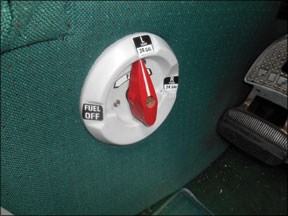

Owners of 1977 through 1982 Warrior IIs also can get a gross weight increase, from 2325 up to a whopping 2440 pounds. Mostly a paperwork exercise requiring only installing a placard and carrying a later Piper information manual, the STC gives early -161 owners the same gross weight 1983 and later models enjoy. Ventura Aero (www.ventura.areo) offers this mod.
Another interesting STC involves installing a supplemental storage area under the baggage compartment floor, capable of storing up to 25 pounds. The mod, available from Aircrafters, Inc. (www.aircrafters.com), includes all parts and paperwork necessary for the conversion.
Other mods include the usual from LoPresti Speed Merchants (www.speedmods.com), Met-Co-Aire (www.metcoaire.com) and Knots-2-U (www.knots2u.com). The offerings include gap seals, new wingtips—including tips with landing/recognition lights.
As with any personal airplane, we strongly recommend joining its type club. Their expertise can save real money when tracking down common parts and problems. Warrior owners are fortunate in that they have an excellent organization, the Piper Owner Society (www.piperowner.org), which merged with the Cherokee Pilot’s Association. There is also a Piper Forum (www.piperforum.com) where Piper pilots exchange thoughts.
Owner Comments
In a partnership, I have owned and operated a Warrior in New Zealand for 26 years. It began life as a PA-28-151 and served with a number of aero clubs before we bought it in 1987. It was tired but structurally sound. We restored it in 1992 and in 1997 upgraded to a 160-HP engine via STC.
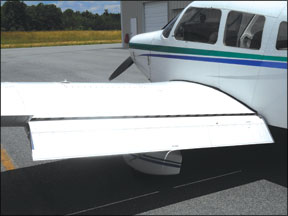

We have flown the Warrior all over New Zealand. Even though we keep the airplane to a very high standard, it certainly doesn’t break the bank to own it. It is a robust aircraft, simply constructed with well-proven systems.
It is not the flashiest performer; 100 knots is as good as it gets at 75 percent power, but it’s honest and reliable. It easily carries three persons, a good overnight bag and four hours fuel. We have the Frise aileron model—in turns, the airplane is delightfully stable. Stalls are benign and come after good warning. It handles crosswinds well, an advantage in this country as many smaller airfields only have a single vector.
Once trimmed for straight and level flight, it is very smooth, which is good for passengers with little or no flight experience. With New Zealand being narrow and relatively mountainous, strong winds aloft and leeway are always a factor. The Warrior has proven to be a stable and comfortable machine for our kind of flying.
We have had few maintenance surprises. One big job a few years ago was the replacement of the wing walkway skins. With the single door, the skins do take a load over time. It seems that one can expect them to show distress at around 6000 hours. Flap corrosion due to the open-to-the-air nature of the design is another area to watch. We have rebuilt our flaps and have a second set, corrosion treated and painted.
We have had little other trouble with corrosion. When we restored the airplane, we corrosion-proofed it throughout, which has made a huge difference in our maritime environment.



0)]
Dr. Ross St. George,
School of Aviation
Massey University
My family adopted our 1976 bicentennial, red, white and blue Warrior when it was 18 months of age. Now, 35 years later, it is still a magical adventure. The original paint has been touched up and still looks glossy. The interior is 1970s Bahama Blue—a color you can’t get anymore.
Over the years our Warrior has been modified with panel upgrades, a 180-HP engine, upswept wingtips with landing lights, strobes and flap seals. The mods improved handling and, we think, made it easier to land well.
Seven family members from three generations have earned their private pilot certificates in our family Warrior.
What do we like about the Warrior? It glides like nobody’s business, and handling is calm and collected at all speeds. The graceful wing has no surprises in the stall and maintains good directional control. With the 180-HP engine, it climbs better and will cruise at 120 knots. Even though it now has Archer performance, the Warrior airframe has advantages. The full-opening cowling allows easy inspection of the engine compartment before each flight and the wheels are an inch smaller, which presents less drag in cruise.
For us, it costs less to own and operate than anything except maybe an LSA. On top of that, the pleasure factor is sensational.
Thomas Reindl,
Via email
I owned a 1976 Warrior for three years and absolutely loved the airplane. It was my first airplane after I got my private, and I used it to get my instrument rating. It was a great learning platform and provided the performance and stability needed for IFR while retaining an operational simplicity that allowed me to focus on the more challenging aspects of the rating.
I bought the plane with nearly all of the Knots2U speed mods in place—gap seals and wing root fairings. It also had the RAM STC’d 160-HP engine upgrade, effectively making it a Warrior II. All this combined to produce airspeeds most people wouldn’t believe. I had just a single-probe engine monitor, so I leaned to roughness and then enriched until the engine smoothed out. Doing this, I routinely managed 115 knots in cruise at 8.5 GPH.
I upgraded the panel with a Garmin 430 coupled to a simple, Century I autopilot, which added safety and security. It had no altitude hold, but it really wasn’t necessary except in rough air. When trimmed correctly, the airplane will hold altitude nicely.
I also had the Laminar Flow System Speed Pants installed, which added five knots to the cruising speed, giving me an honest 120 knots on 8.5 GPH.
Jeff Schlueter,
Via email
After training in Cessnas, a buddy and I went airplane shopping with an open mind. In 2006, we bought a 1979 Warrior II. I later got my instrument rating in it.
The O-320 is rightfully recognized as a reliable workhorse. The stretched fuselage increases rear legroom. The plane is quite easy to fly and land—I’m actually glad I trained in the more squirrelly Cessna 152 to build skills. The Warrior rewards on-speed approaches; it will float if landed too fast. It seems to have no handling vices. I remember reading somewhere that Cherokees “just refuse to do anything weird,” and I think that’s exactly right.In the winter, the heater is capable of sneaker-melting temperatures in front, but seems best suited to cryogenic experiments in the back seat.
Outside the normal range of stupid pilot tricks, I think the only way a Warrior can bite you is if you don’t respect density altitude when loaded. I use an iPhone app and a healthy fudge factor on warm days.
Doug Garrou,
Via email

